|
In a span of a week | came across with 3 different articles about Animation and Animation History. Since the art itself has only a little more than a century of existing it is still really crude and really secretive. In one hand it is art in the pother is an industry that moves money and a message in the era of communication and mass production. And of course, it also depends o n the place in the world it is created (and this has to do with economic and political reasons). Personally, even if I know about animation in Europe, Eastern Asia and North America I am not as familiar with how animation as an art form is produced everywhere. And my mental image goes firstly to the big american studio idea. This is why these articles that reunite different point of views about it and how things like the internet influence the future of the animation industry seems to be an important starting point for this conversation.
The conclusion : While big studios in America can’t allow themselves to have money losses for gathering little public with their productions, the European has a culture of smaller studios with little secrecy, and general lower budgets but also more risky in terms of art and design. And above those also more inspiration, the public of european animation is seen as wider than the American (who still are deeply rooted in animation as only for children). This kind of research also helped me to know where to look at for references on artists I wanted to follow. When I watch an animated series, the first thing that I ask myself is if it makes sense to it be an animation. Not everything does. And some stories are just animated for no reason. This is one of those series in which the animation is one of the main story components. it would be nearly impossible to make such bold contrasting scenarios, and touch the humor on it so smoothly with scenes full on drama. The design, the scenery, this entire world makes sense visually and is not that easy to achieve. When I was little I didn't liked Samurai Jack. mainly because it was impossible to me to follow the story and even more the way cartoon network transmited the episodes.
Now they have a new season and so far I can tell that it wont be disappointing. This is a series based in composition and strong sense of action. Atmospheric with this glimpses of humor even in darkness treating serious moments as heavy and full of emotion. A series that also has the main character wear heels without being degrading.
This one is in my top 10 series of all time. And I am going to keep studying it for its humor, storytelling, composition and design. Getting started with storyboards is not exactly easy, since there is not just one way to do storyboards. They are made for the production you are in and they all change with the type of production. That is why this is a great book to get into the technicality of storyboarding. Bold, incredibly graphic with illustrated examples and to the point. This is part of the content list:
Personal Highlights.
Big changes in the Pokemon animated series in the new season and I again, was kind of divided between if it is good or if they are going for a more careless approach since with this series sometimes money overwrites anything else. I am a big fan of the anime and I've been watching it for years, so I am pretty familiar on how pokemon has changed. For me it has been 14 years of watching the anime. The last season was an incredible surprise, some episodes being so well crafted that you could see the long production they went through. And even if they repeat animation, they also did fantastic thing that I never saw before. With pokemon everything is difficult because one of the main reasons the series is still going is because it drains money of the fans. Money everywhere, game merchandising series special tv shows. For me it is a real transmedia series and somehow it does NOT make less of each opportunity even when more conservative people start arguing of the ruin of the series just for some new deign or because it is aimed for preteens and the characters reflect that. I was asking myself this the other day, part of me enjoys the more personality in one of my all times faves: pikachu. But i also was concerned about the entire idea of they just changing for the sake of change. Now that I know it is about 3D - 2D animation software upgrades and their real way to try to use this /in a series that each season has over 30 episodes/ it is amazing to know they are still going up and up. "Try everything new. Once again, the other option is the worst option." UPDATE: I watched the first 7 episodes in one go. I did it. At some point in my life all the stars aligned for me to go to the Warner Studios in London to see the Harry Potter Tour. And it was so incredible magical!! I am telling it not only as a life long fan of the wizarding world, but as an artist that want to spend her life working in the preproduction area of films and series and what not. It is so endearing and amazing to be able to see all the behind stage work of a big franchise and all the world building in every single detail and showing that no desicion is made randomly. Details that in the movie that may never make the screen and yet were there for the story to become real. Nothing is equal to enjoy the maquet and the maquet of the maquet and the maquet of the maquet of the maquet. And yes, there are such as many maquets as that. When you see it all together you get a feeling of the decissions made by several different artists: what is this world like to the people who make it happen visually. The idea of having it all displayed for generations and long time fans to see it is fantastic in itself. I want to name the next one, having the sketch with a little explanation and in front, the entire set. You can look at them both and admire them not only for the memories and the good times and making dreams true, but also as a marvelous piece of craftmanship and intense imaginative thinking. Special Mention: the Graphic Design of the wizarding world. When you see it all it leaves a feeling of a specific time. Of a specific society, and also the influence of different artstyles from the early 20th century (perfect for a really slow and steady society that is also dragged in the modern world of muggle inventions, in my opinion) I would go back any time, there is so much to look at, the people working in the tour make the experience really amazing and worthy.
KUBO AND THE TWO STRINGS
USA 2016 Director: Travis Knight Kubo and the Two Strings is the last stop motion feature film from LAIKA is set in feudal Japan and follows the story of Kubo a young boy who takes care of his mentally ill mother and raise money telling stories in a near village inspired by the adventures of his father, a disappeared samurai. Laika Entertainment, with four feature films, has become in the last years one of the most renowned animation studios. Bringing together the traditional technique of stop-motion supported by CGI animation and unique style whit original stories, make of their films an alternative to the 3D aesthetic imposed by the big studios such as Pixar or Dreamworks. The narrative and strong aesthetical decisions make by the studio in their productions has now become their brand image. Kubo is the first film directed by Travis Knight, president of Laika Entertainment and producer of their previous feature films: Coraline, ParaNorman and The Boxtrolls, all of them nominated to the Academy Award for best animated feature. This time, director Knight introduce us to the plot with naturalness and touches themes such as the effect of death, and significance of memory and legacy in an intense story about love and courage. Kubo (voiced by Art Parkinson) is a young boy and a storyteller. He knows that his father was a brave samurai that died fighting against evil and his mother was able to rescue him from his own grandfather, the Moon King (voiced by Ralph Fiennes), who is a sadistic spirit who took the boy's eye as a new born in the hopes of blinding him. In her moments of lucidity her mother raised Kubo among myths about heroes and monsters, transmitting on his son the passion for telling stories. Also, she was the one that gave him magic. Kubo, as his mother, is capable of bringing to life paper and creating intricate origami figures with his shamisen, a three string traditional Japanese musical instrument. But these myths are more than that, and upon knowing Kubo’s location, two powerful witches and supporters of the Moon King starts following him, and now he must run away and find an ancient magic armour if he is to defeat his grandfather. Kubo embarks in this adventure finding himself away from the comforts of his childhood aided by a monkey (voiced by Cherlize Therion) and a cursed half warrior, half beetle (voiced by Matthew McConaughey) as his allies, and armed whit his magic shimasen and the knowledge of the old stories her mother told him growing up. Packed with stunning scenery, this story also counts with one of Laika’s most important characteristics in his feature films: not shying away from the strange and slightly disturbing. The eccentricity and oneiric plays in Kubo’s favour allowing balancing suspense and dream logic with humour and sensitivity with one of the recurring themes in now days animated films such as Tomm Moore’s Song of the Sea, overcoming loss and fear trough storytelling and how it helps to preserve our memories and hopes for the future. And it is one of the most central pillars of Kubo, it is about being connected to the past trough storytelling and how it strengthens our view of the world. The need to hold into stories we know and how they transform our perspective and, at some point, being so fundamental they become part of ourselves and help us reflect in the world we know as much as broaden it. The power that Kubo imposes in his stories is the same power that storytelling has to make a change and influence the future and that knowing those tales is game-changer is a powerful realization. One of the most prominently aspects of Laika is that they use a mixed media in their stop motion producing techniques; they have, since the making of Coraline, continually use the most recent technologies like 3D printing even managing through the years to collaborate with 3D printing companies to develop new software for the puppet and set making process. Also the study pushes stop motion animation to another edges in its production, to bring their stories to life managing to touch and intertwine the delicately hand-crafted settings with CGI. Resulting in the tactile physicality of the stop motion whit intricate and high passed action scenes and visual effects to reach the high stylized look of the film. 22ND ENCOUNTERS SHORT FILM AND ANIMATION FESTIVAL ANIMATION 5 - A LOOK INSIDE A series of animations about medical psychological and emotional aspect of life (hence the title) 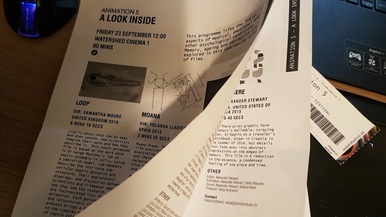 Featuring here the copy and the ticke Featuring here the copy and the ticke I went in without any expectation, and any background about the festival. The shorts were incredible diverse in technique, public, rhythm. Also the festival even gave a copy with the details of each short, which is a bless for future reference and people with short memory for names. Some of the directors of the shorts were in that particular screening, and were presented before their short started. Highlighted points: - Referencing something as personal as an experience or as intangible as chemical reactions requires certain poetic of the image. - The autobiographical nature of some of them, even with the voice in off give a personal feeling, like you are being told an anecdote by a friend. I can see why people look to tell this stories, share this kind of experiences some with humor and others just wanting to, maybe at some point, tell others what they wanted to be told while they were experiencing that. - In a more personal note, it even bothered me how the rhythm of some where delicate, enough to highlight how intimate they where and yet make them entertain enough for an audience, where sided with harsher stories, not bad by themselves but they threw out of the groove. Now I want to talk about a particular one: Here There by Alexander Stewart. I consider myself on the more traditional narrative side, just as a preference and yet this one made me tear up a little. It starts just like notes on a sketchbook, detailed notes from a place, and with the time they start to un-draw themselves. Memories from a place far away and it touched a personal point. Some time ago I read that, whit time, the memory, our memory, works by rounding out shapes, smoothing lines. That is how the round glasses you kind of remember some old teacher wearing were more likely cat-shaped. Memory tends to blur details, like saving storing space by simplifying shapes. And for someone who move from another country, is quite a point to make. By nature humans don't want to forget. I don't want to forget, specially not forget about my cat not when I am away, not after he dies. Not knowing anything about the short and watching it was making the connections slowly in my head, surprise surprise, details start to fade, but also, the most heartbreaking part was when things started to get color, as a real effort to remember thing, and yet it was an amalgam of color the starting place at the end of the short, just leaving a feeling of some place that is distant and slightly unmemorable. It still is a roller coaster of emotions that one animated short, and it let me thinking "of course it is, it touched my most recent and personal experience of moving from Colombia". But is this the way these other shorts, about postnatal depression and haunting ticking of time, feel to their particular sensibilities? Maybe this is the reason these personal experiences have to be shared . (and we go back to the monsters reflection and the mirror) |
Archives
January 2023
INSTAGRAM (@linipik)
|
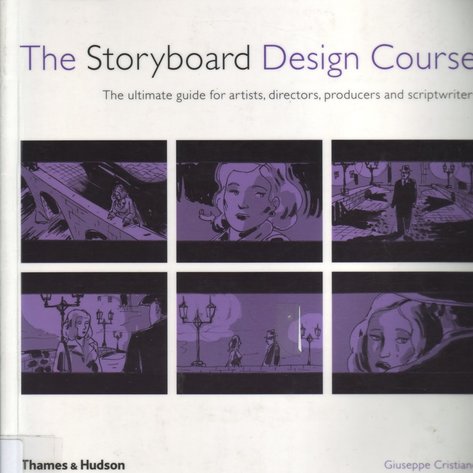
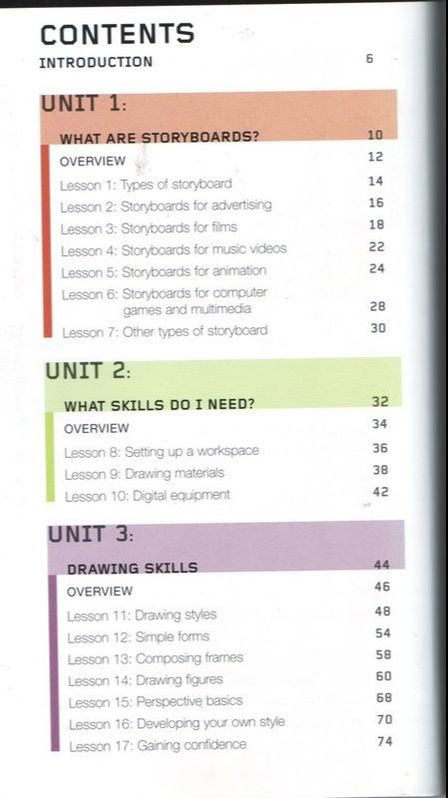
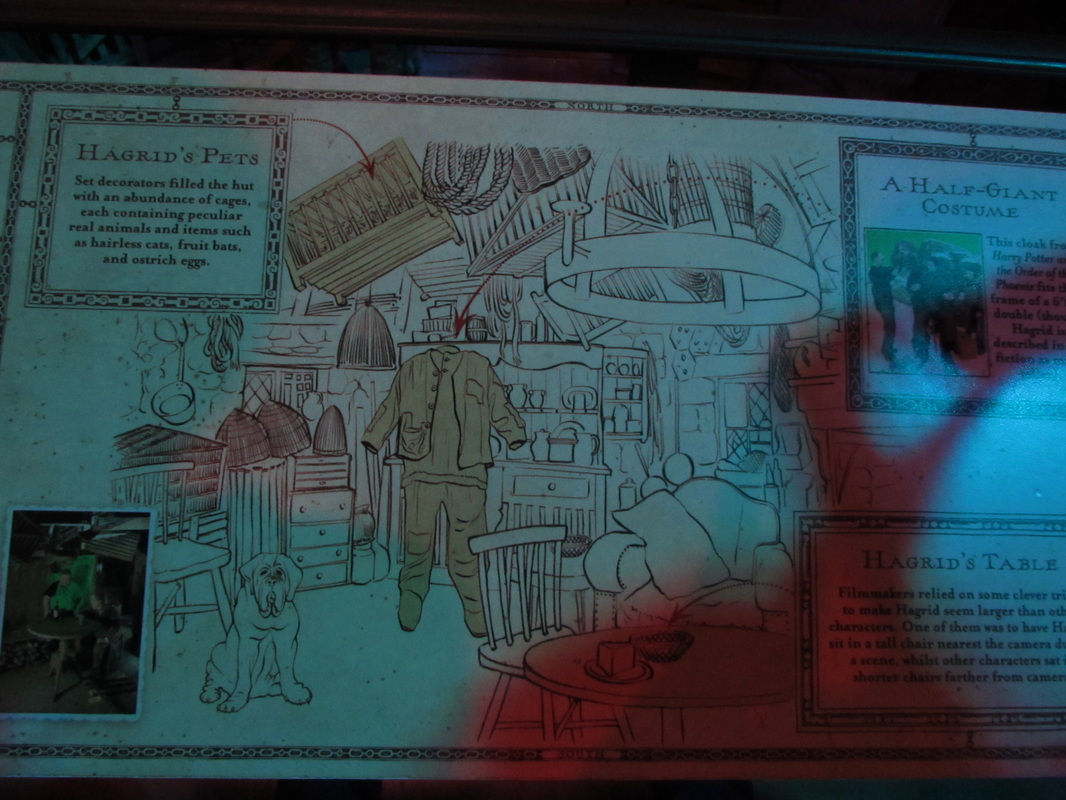
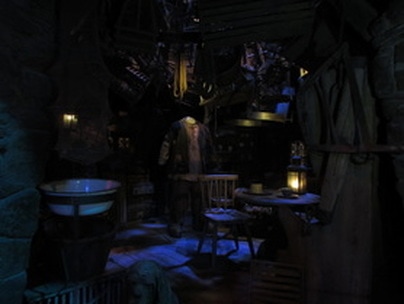
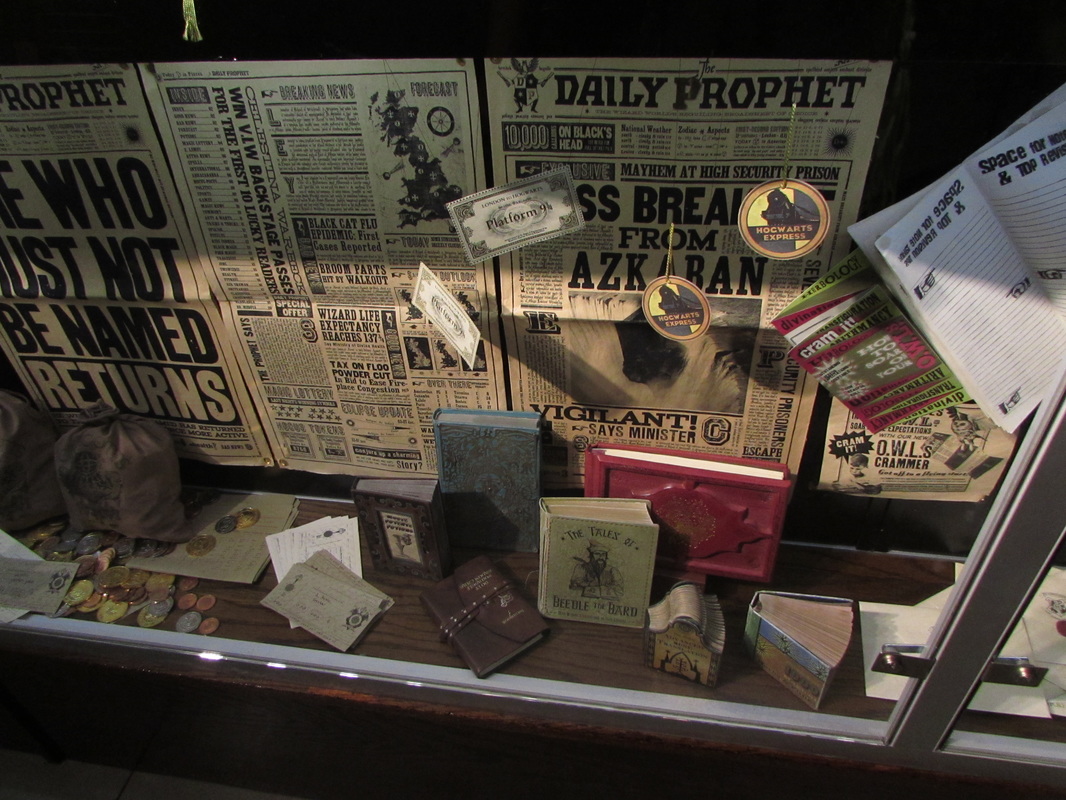
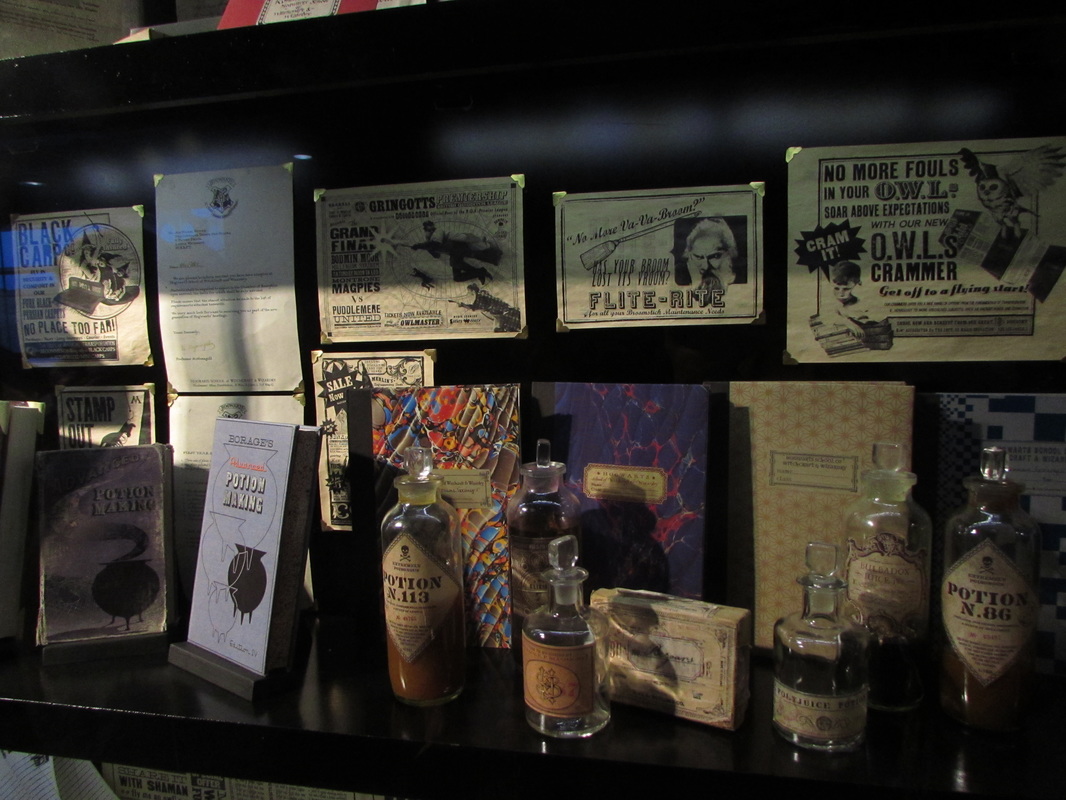
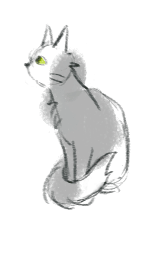
 RSS Feed
RSS Feed